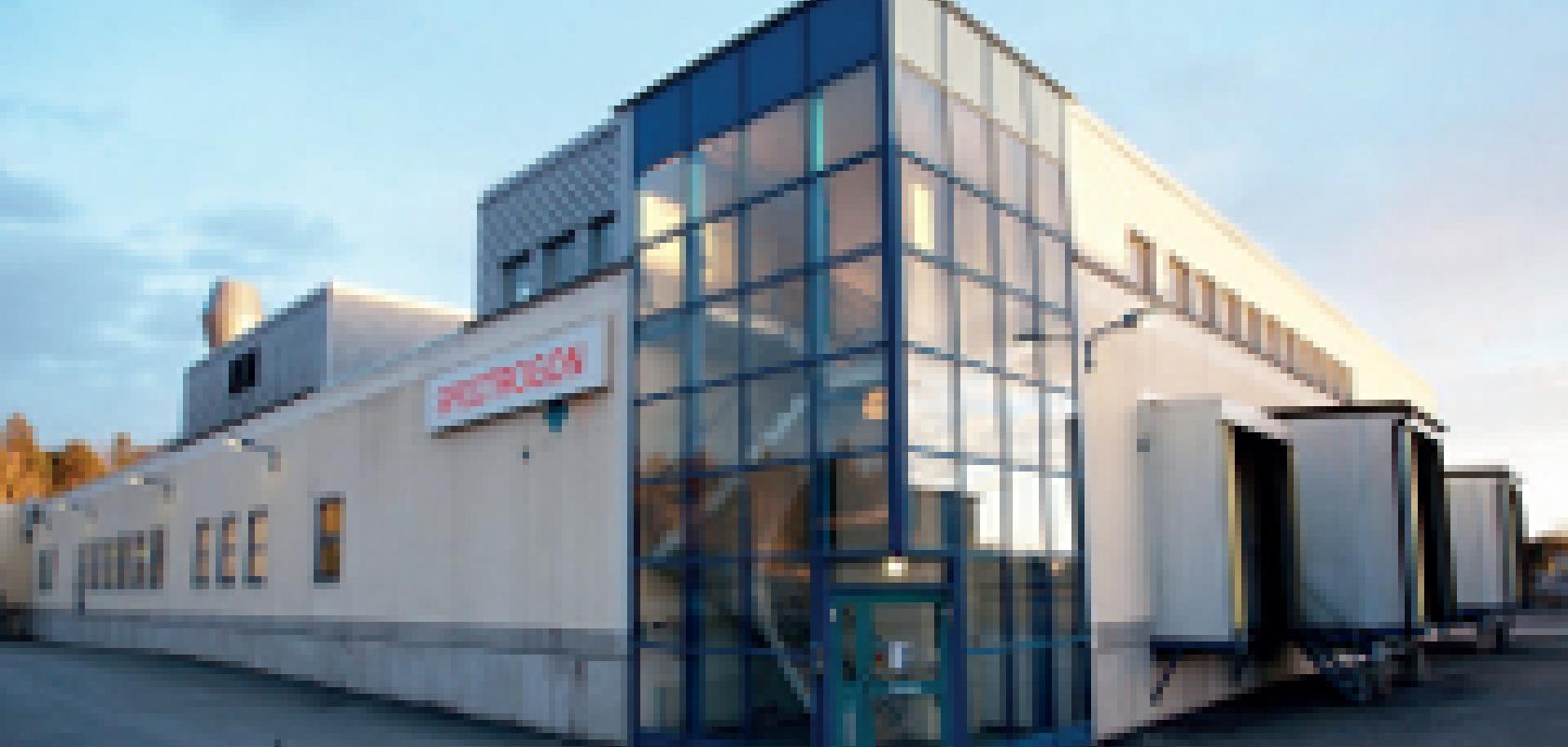Spectrogon, the Swedish manufacturer of optical interference filters, optical coatings and holographic diffraction gratings, has its roots back in the late 1960s. Research on optical thin film at the Royal Institute of Technology in Stockholm, and at AGA, a major Swedish industrial group, eventually led to the creation of Spectrogon – a company that, by the late 1980s, had become a subsidiary of the Spectra Physics group.
The company remained part of Spectra Physics until 1991, when a management buyout ensured Spectrogon was an independent company. By this time, the company already owned a production facility – and in 2002 this was expanded further with the acquisition of a second production facility in Arninge, north of Stockholm. This factory was enhanced in 2011 with the addition of 400 sqm of office space, which facilitated last year’s relocation of the main headquarters operations to Arninge.
According to Reine Karlsson, head of sales and marketing, optical filters make up the majority of the company’s business today, with the most popular application being gas analysis. ‘Our core business has always been the manufacture of optical interference filters in the visible, near infrared and infrared range,’ says Karlsson. ‘Around 80 per cent of our sales are to OEM customers, and we are particularly strong in the infrared business.’
Within the filters market, Spectrogon also has interests in thermal imaging and night vision applications, environmental monitoring, grain filters, moisture sensing and some laser applications. The filters enable particular wavelengths to be selected, depending on the specific application.
For holographic diffraction gratings, Spectrogon claims to be the world leader in the manufacture of pulse compression gratings. ‘Here, a pair of gratings is used to create very short laser pulses with high energy,’ explains Karlsson. ‘This opens up applications in areas such as multiphoton fluorescence, multiphoton polymerisation, femtosecond spectroscopy, and laser ablation. For laser ablation in particular, this technique is still state-of-the-art compared to alternative methods. In recent years, this market has shown steady growth.’
The company’s gratings products include those for the telecoms industry, and those for monochromators. At its most basic level, a holographic diffraction grating splits different wavelengths in different directions.

Reine Karlsson, head of sales and marketing at Spectrogon
Spectrogon’s third main area of business is traditional coatings, which covers ND filters, beamsplitters, mirrors, AR coatings and so on, all of which cope with the various issues generated by problems of reflection.
One of the most significant changes within Spectrogon has been a shift to more and more volume production, all of which is done in Sweden. ‘We are working a lot with automated processes,’ says Karlsson. ‘Previously, say around a decade ago, we simply didn’t have the volumes to justify large-scale production. Now, having spotted the potential, we have developed a range of standard products that has allowed us to step up production. As a result, we are receiving larger orders, and are continually improving our production techniques.’
Part of this change in manufacturing involves making filters on larger wafers, which are then cut down to size accordingly – previously, the filters were made directly at the required size.
The Spectrogon website contains a huge offering of optical characteristics, and that’s the first port of call for new customers. ‘Our range is so broad that even the most specialist needs can be catered for by at least one of our products,’ says Karlsson.
Spectrogon exports 90 per cent of its output outside of Sweden, with North America and Europe its main markets, and Asia growing quickly. It has approximately 70 employees across three offices – one in New Jersey, USA, covering North and South America; one in Glenrothes, Scotland, covering the UK, Ireland and Benelux; and its headquarters in Sweden, covering the rest of the world. These offices are supported by a large network of resellers, though none of these have exclusivity in any given territory.
‘Customers come to us because we are a very well-known producer of optical filters, and have been so for a very long time,’ says Karlsson. ‘Also, the quality of what we produce is very good and we deliver it on time – customers know that, which is why we get a lot of orders.’
A successful strategy through the years has been for Spectrogon to supply universities and other research organisations. As with Spectrogon itself, many research projects can develop into independent companies in their own right. Customers like to stick to what they know, so often the loyalty to Spectrogon that has been built up through the research project is carried forward into that new company.
Last year was a good year for Spectrogon, and this follows eight or nine years of solid and continuous growth for the company. ‘Around the world, individual economies may be unstable,’ says Karlsson, ‘but one of the strengths of Spectrogon is that we are working in a lot of different markets. So, when one goes down, another one goes up. We believe that 2013 will see us grow still further.’

